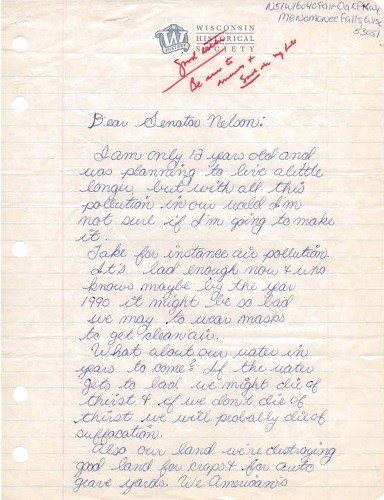
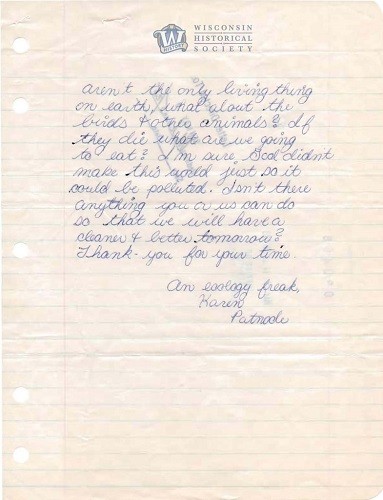
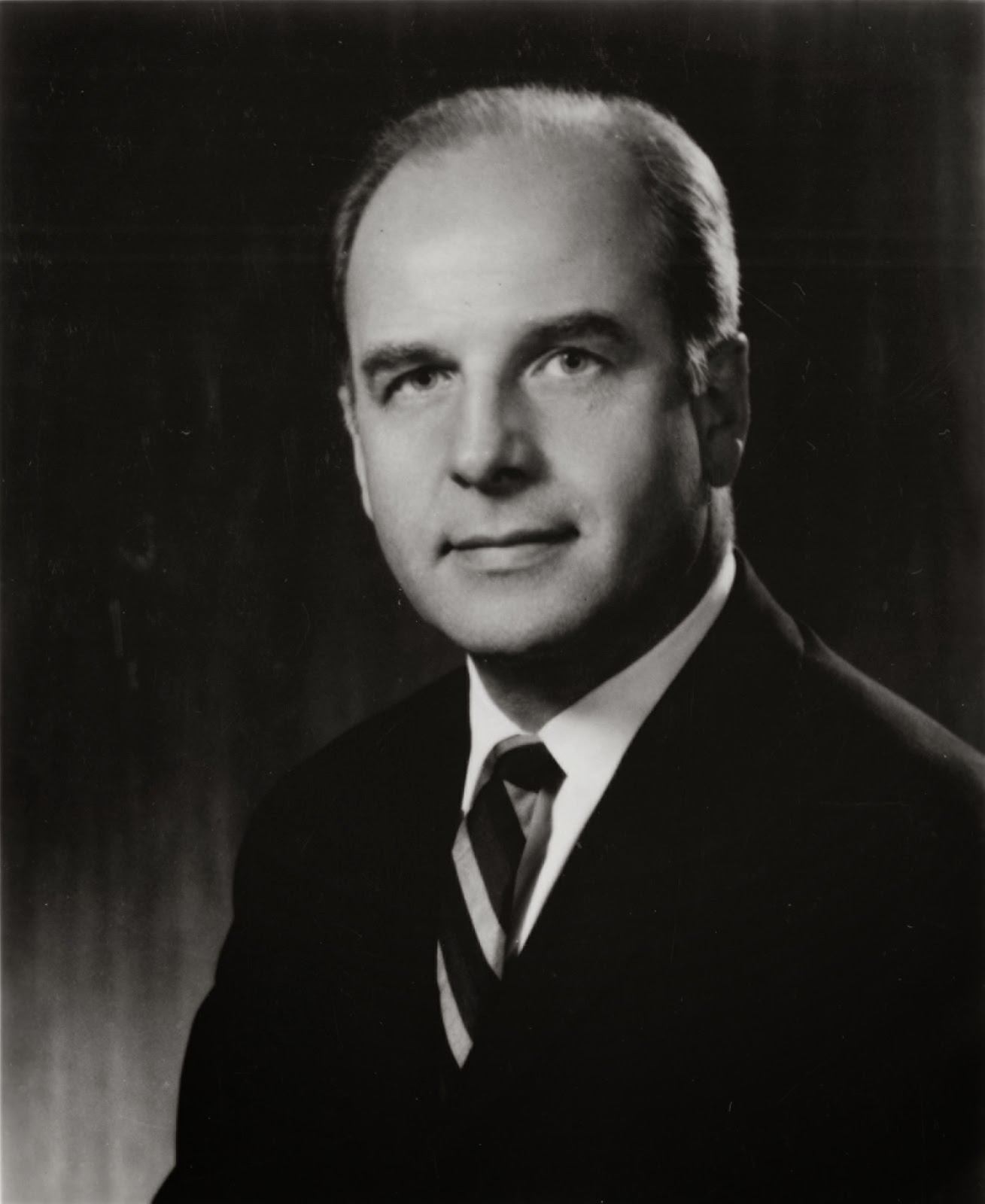
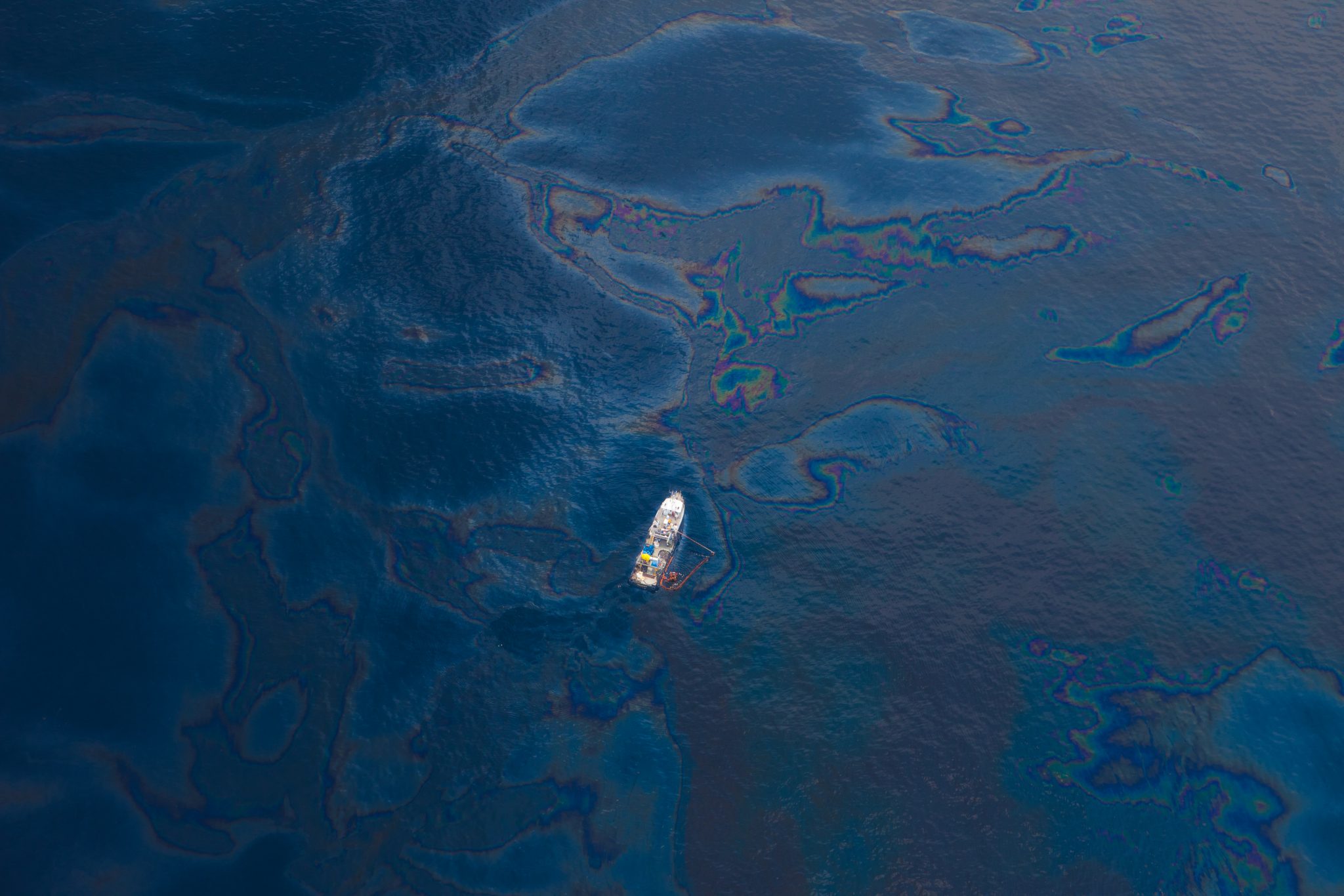




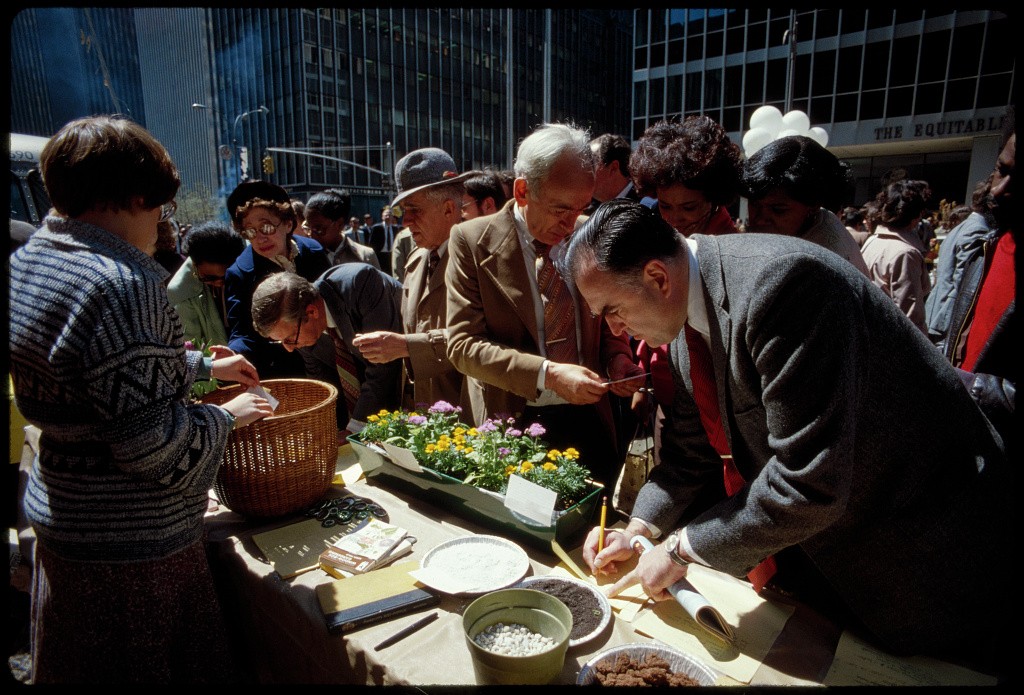

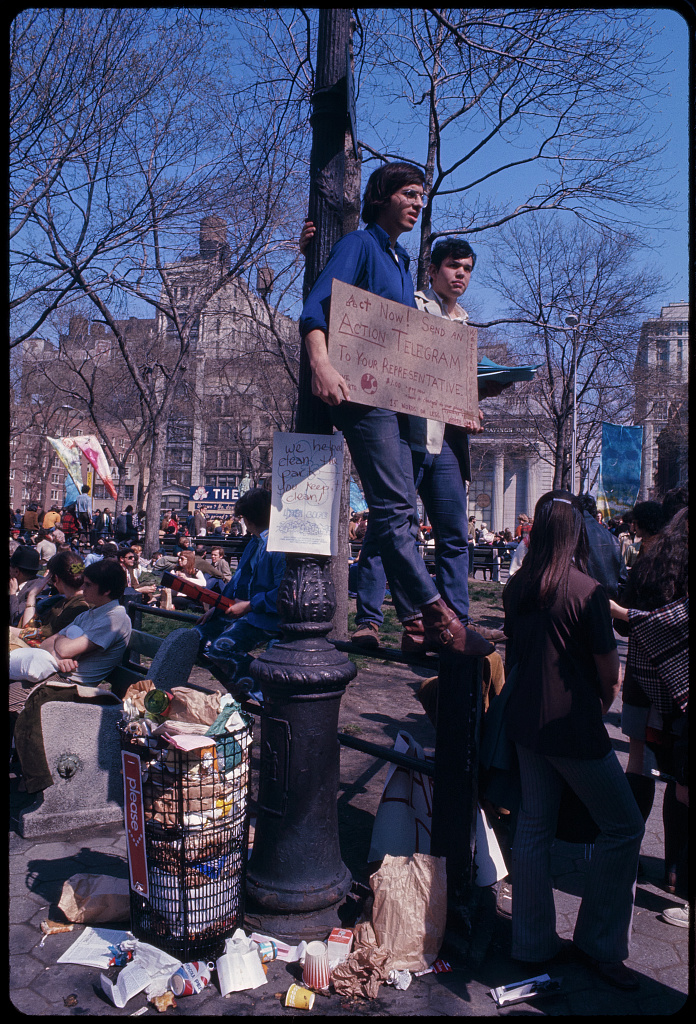

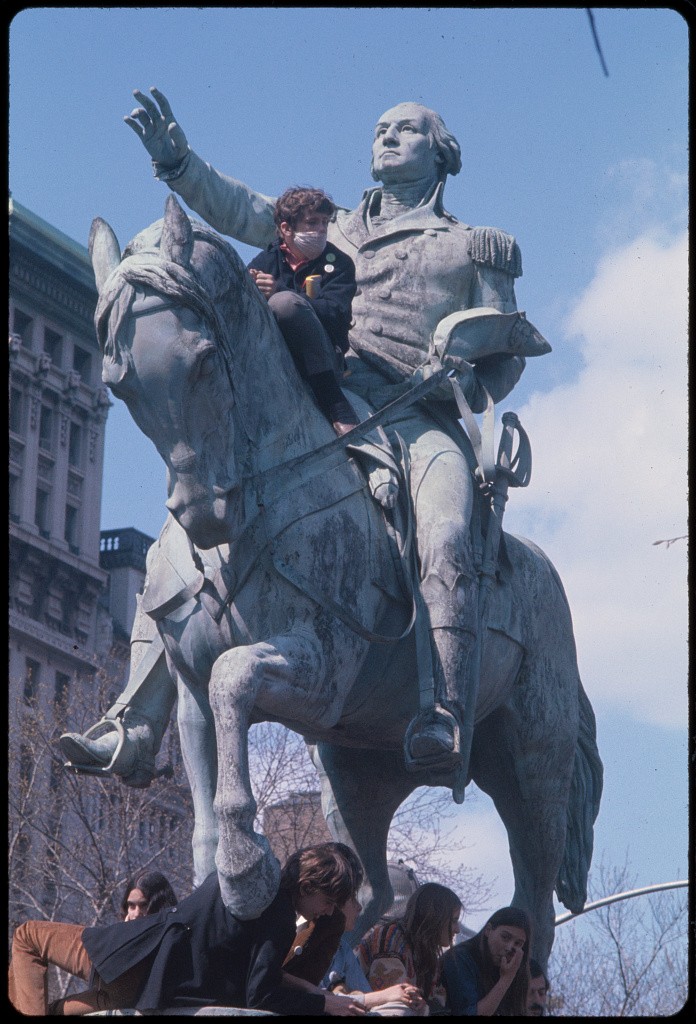

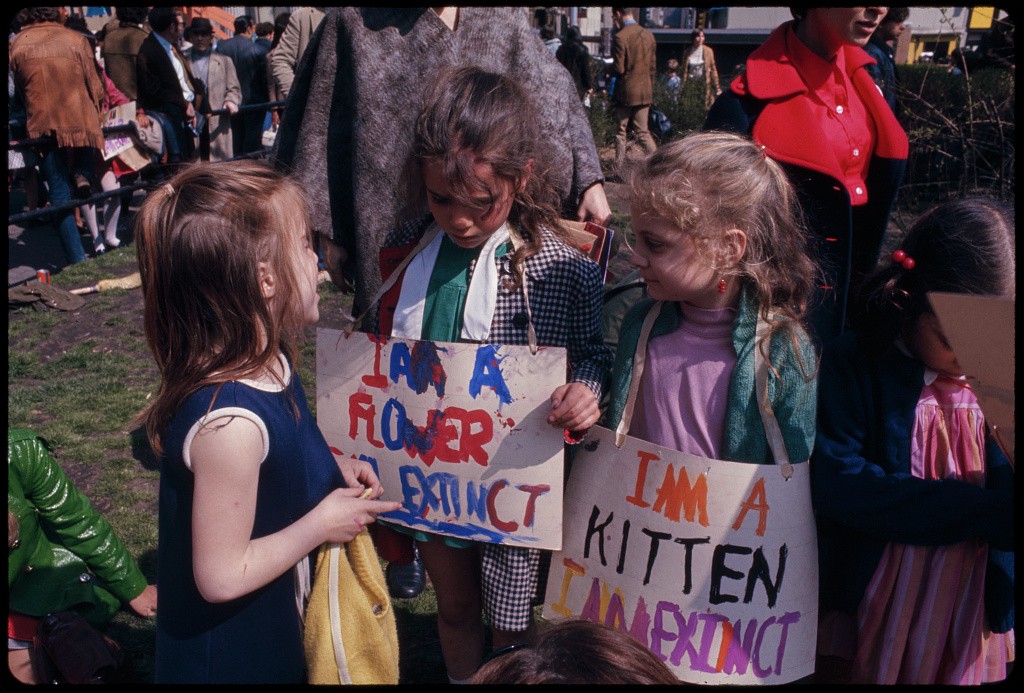



Dear Senator Nelson:
I am only 12 years old and was planning to live a little longer, but with all this pollution in our world I’m not sure if I’m going to make it.
Take for instance air pollution. It’s bad enough now & who knows maybe by the year 1990 it might be so bad we may to wear masks to get clean air.
What about our water in years to come? If the water gets to bad we might die of thirst & if we don’t die of thirst we will probably die of suffacation.
Also our land we’re destroying good land for crops & for auto grave yards. We Americans

…aren’t the only living thing on earth, what about the birds & other animals? If they die what are we going to eat? I’m sure God didn’t make this world just so it could be polluted. Isn’t there anything you or us can do so that we will have a cleaner & better tomorrow?
Thank-you for your time.
An ecology freak,
Karen Patnode
The environmentalist Gaylord Nelson (1916–2005), who became known as the “Conservation Governor”, grew up near Clear Lake in Wisconsin, the home state of early defenders of the American wilderness, such as John Muir and Aldo Leopold. Just as he read Rachel Carson’s Silent Spring (1962), along with millions of other Americans, Nelson was elected to the Senate, and outraged by the damage caused by chemical spraying, he vowed to fight for environmental protection.
But he had few allies; when he introduced a bill in 1966 to ban DDT, not one member of the Senate joined him.

A similar BP Deepwater Horizon oil spill disaster in 2010, Kris Krüg
A similar BP Deepwater Horizon oil spill disaster in 2010, Kris Krüg
In 1969, an appalling oil spill in Southern California shocked the nation. Known as the Santa Barbara oil spill, over a ten day period, around 100,000 barrels of crude oil leaked into the Pacific Ocean, enveloping the coastline and drastically affecting marine life. The death of thousands of sea birds and unknown numbers of mammals hit the news, in a disaster that helped to create the modern environmental movement.
One outraged spectator was Nelson. Hoping to channel public outrage, he proposed a nationwide educational “teach-in” about environmental issues, to be called Earth Week. This grew into a single demonstration, Earth Day, the first taking place a year later on 22 April 1970.
Teachers, students, artists and concerned citizens took part in a day of activities – some
plantings trees, others burying cars in mock graves, to highlight their hazardous
exhaust fumes. Earth Day attempted to make the vulnerability of the planet, and the
finiteness of resources, better understood.
Library of Congress
Library of Congress
Library of Congress
Library of Congress
Library of Congress
Over the years, Nelson received missives from all over the USA, from all ages – including 12 year-old Karen.
